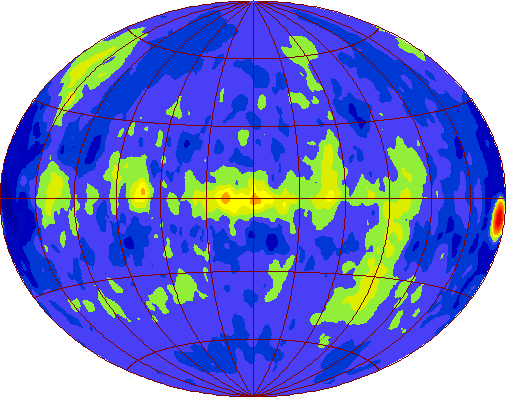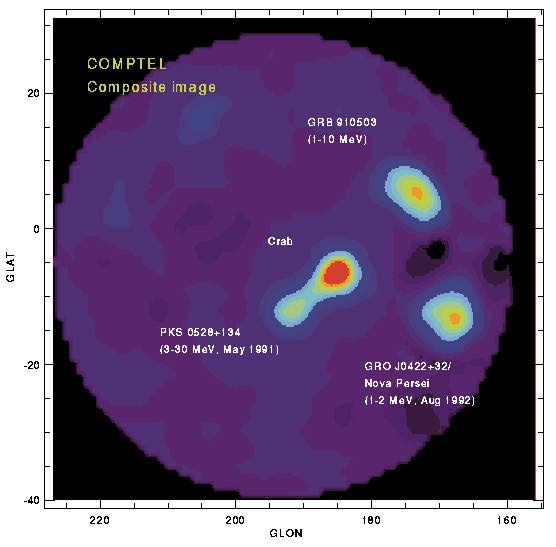| The dominant feature is the wide strip across the middle of the image
which is the gamma-ray glow of the Milky Way. This is shown particularly
well by the EGRET map on the home page. This diffuse
emission gives astronomers insight into the interactions of cosmic rays
and interstellar material. Unfortunately, the emission also makes it more
difficult to detect point sources of gamma rays which lie in the galactic
plane. The other main feature of these maps is the occasional island of
enhanced emission seen over the diffuse background. These are the gamma-ray
emitting pulsars and galaxies which are of considerable interest |
to astronomers. Many of these point sources
are not obvious from simply inspecting the map. For instance, the EGRET
point source catalog contains 157 individual sources. Advanced statistical
methods are required to distinguish the weaker sources from mere fluctuations
and to make the best estimates of the source characteristics such as true
location, total flux, and variability or a more detailed look, we can focus
in on a smaller region of sky. The anticenter region (so-called because
it is 180 degrees away from the direction to the galactic center) |
is a good place to start. The COMPTEL image of the anticenter
shows four different types of objects which represent the variety of the
gamma-ray sky. The Crab pulsar, the active galaxy PKS 0528+134, the transient
gamma-ray source GRO J0422+32, and the gamma-ray burst GRB 910503 were
all detected by COMPTEL in this region. Much of the sky is similar, look
closer and you will find several sources, each with distinct characteristics.
It is worth spending a little time discussing all these types of sources
in more detail to understand the contributions of the Compton instruments. |


